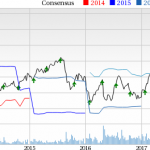In case you need any assistance in trying to figure out when Janet Yellen spoke, or at least when the text of her speech was released from embargo, here is a hint:

It seems her stream of consciousness was somewhat consistent with the old Greenspan idea of “fedspeak.” People and investors appear to have taken from it what they wished, with some commentary talking about its apparent “hawkishness” before being overwhelmed by others claiming its clear “dovishness”. I don’t think either of those terms apply, and certainly not in the fashion with which they are leveled by the continued conventions of mainstream perspective about monetary policy.
What I found in the speech is some good indication for what I wrote Friday, though you as the reader should be equally suspicious about whether I am falling into that same fedspeak trap (as I so very much look forward to the day when nobody cares one bit what any Fed official or central banker has to say, and that day is coming).
Yellen’s speech, in my estimation, contained perhaps a bit more softening in terms of the certainty with which so much has been taken for granted for so many years. It isn’t a whole lot, nor should we expect the Fed or any of its officials to radically alter their public views in condensed fashion. Reading between enough lines, the questioning is palpable. As WSJ’s Jon Hilsenrath wrote yesterday, “…after more than a decade of economic disappointment, the central bank confronts hardened public skepticism and growing self-doubt about its own understanding of how the U.S. economy works.” I would classify that, in perhaps a minor key, as Yellen’s theme.
Reading through her thoughts, it does appear at first that nothing has changed. The current Fed Chair talks about how the current condition may contribute to monetary difficulties in the future should the Fed need to address another downturn (I won’t use the term recession because I don’t believe it applies, a fact that continued intellectual growth in economics should accept eventually). And so she poses all the usual remedies and all the usual suggestions about how the staff has modeled just how much “accommodation” the economy would need entering such a situation.
In part, current expectations for a low future federal funds rate reflect the FOMC’s success in stabilizing inflation at around 2 percent–a rate much lower than rates that prevailed during the 1970s and 1980s. Another key factor is the marked decline over the past decade, both here and abroad, in the long-run neutral real rate of interest–that is, the inflation-adjusted short-term interest rate consistent with keeping output at its potential on average over time…
Would an average federal funds rate of about 3 percent impair the Fed’s ability to fight recessions? Based on the FOMC’s behavior in past recessions, one might think that such a low interest rate could substantially impair policy effectiveness…
A recent paper takes a different approach to assessing the FOMC’s ability to respond to future recessions by using simulations of the FRB/US model… In general, the study concludes that, even if the average level of the federal funds rate in the future is only 3 percent, these new tools should be sufficient unless the recession were to be unusually severe and persistent.














Leave A Comment